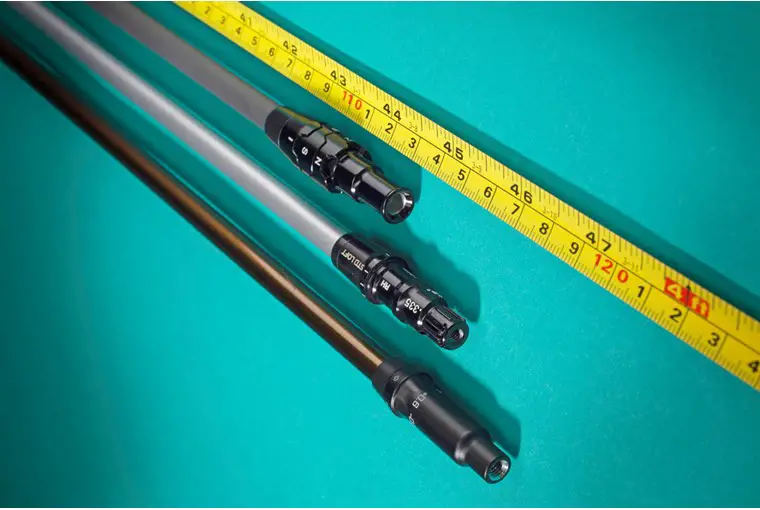Driver Shaft Length

For golf enthusiasts, finding the right equipment is critical to improving their game. One key piece of equipment that can have a significant impact on a golfer’s performance is the driver shaft length. The length of the driver shaft can affect the golfer’s swing, accuracy, and distance. With so many factors to consider, choosing the right driver shaft length can be a challenging task.
In this article, we’ll explore the importance of driver shaft length in golf, the factors that affect the ideal length for a golfer, and the benefits and drawbacks of shorter and longer shafts. We’ll also provide tips for testing and selecting the right driver shaft length and common mistakes to avoid.
Whether you’re a beginner or an experienced golfer, understanding the impact of driver shaft length on your game can help you make more informed decisions when selecting golf equipment. With the right driver shaft length, you can achieve greater accuracy, control, and ultimately, better scores on the course. So let’s dive in and explore the world of driver shaft length in golf.

Understanding Driver Shaft Length
The driver shaft length refers to the length of the shaft between the clubhead and the grip. The standard length for a driver shaft is typically around 45 inches, but it can vary depending on the golfer’s height, arm length, and swing speed.
Factors that Affect Driver Shaft Length
Several factors can impact the ideal driver shaft length for a golfer. These factors include the golfer’s height, arm length, swing speed, and ball flight preferences.
Benefits and Drawbacks of Shorter Driver Shafts
Using a shorter driver shaft can provide several benefits, such as greater accuracy and control. Shorter shafts can also be easier to control for golfers with slower swing speeds. However, a shorter shaft can result in less distance off the tee and may require more effort to generate power.
Benefits and Drawbacks of Longer Driver Shafts
Using a longer driver shaft can help golfers generate more distance off the tee, particularly those with faster swing speeds. Longer shafts can also provide a wider swing arc, which can result in more power. However, longer shafts can be more difficult to control and can result in less accuracy.
Factors to Consider When Choosing a Driver Shaft Length
When selecting a driver shaft length, several factors should be considered. These factors include the golfer’s height, arm length, swing speed, ball flight preferences, and comfort level. A custom club fitting can help determine the ideal driver shaft length for an individual golfer.
Tips for Testing and Choosing the Right Driver Shaft Length
Testing out different driver shaft lengths can help determine the ideal length for a golfer. Many golf retailers offer custom club fittings, which can help determine the ideal driver shaft length for an individual golfer. It’s also essential to test out different lengths on the driving range to see how they impact swing and distance.
Common Mistakes When Choosing a Driver Shaft Length
One common mistake when choosing a driver shaft length is relying on personal preference rather than objective factors such as swing speed and ball flight. Another mistake is not testing out different lengths or seeking professional advice before making a decision.
Conclusion
In conclusion, the driver shaft length is a crucial factor in a golfer’s game. The ideal length can impact swing, accuracy, and distance. When selecting a driver shaft length, it’s essential to consider factors such as height, arm length, swing speed, ball flight preferences, and comfort level. Testing out different lengths and seeking professional advice can help determine the ideal driver shaft length for an individual golfer, providing greater accuracy, control, and ultimately, better scores on the course.





